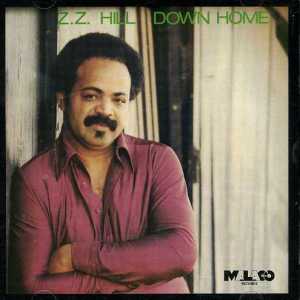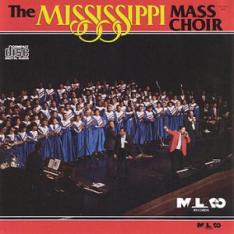If you were to travel back in time to Constantinople’s Taksim Square in the 1920s, you might hear the lively beat from Club Maxim. Inside, you’d likely find a black man in a top hat, perhaps with a pipe in his hand. He might just tell you, as he did one tourist, how he’d overcome “difficulties that would stagger the ordinary man.”
This would be Frederick Bruce Thomas, known later in his life as Fyodor Fyodorovich Tomas, the Mississippi farm boy who became a Moscow impresario and introduced jazz to Asia.
Thomas was born June 12th, 1872 to Hannah and Lewis Thomas, who owned 600-plus acres in Coahoma County, Mississippi. In 1886, a white planter took over their land. Against all odds, the Thomas family sued the planter, and in what must have been one of the few successful cases for black landowners at the time, the Mississippi Supreme Court ruled in their favor. However, the planter appealed and, under threat, in 1890 the Thomas family decided to leave Mississippi and settle in Memphis. In late October, 1890, just a few months after moving the family to Memphis, where he took work as a flagman for the railroad, Lewis Thomas was hacked to death in bed by a jealous husband.
A short time later, Frederick Bruce Thomas, who’d only known life in the South, hopped on the rails, first to Arkansas, then to St. Louis, Chicago, and Brooklyn. He went to Europe in 1894, and in 1899, after crisscrossing the Continent, mastering French, and honing his skills as a waiter and valet, he signed on to accompany a nobleman to Russia.
Thomas’s career in Moscow proved to be more successful than he could ever have imagined. He found no color line in Moscow, where he worked for ten years as a waiter, a butler, and a valet, before becoming assistant to the owner of Yar, the city’s most prominent café-theatre. The Sokolovsky gypsy choir performed there on a regular basis and their songs about their years as slaves likely reminded him of his own people’s story.
Yar was frequented by the bourgeoisie of Moscow and Frederick Thomas became the darling of the wealthy clientele. By 1911 he had earned enough money to open an entertainment garden, “Aquarium,” with the help of two Russian partners. In 1912, he rented a music venue in the city center called “Maxim” which very quickly became popular with wealthy Muscovites.
In Russia, Thomas was one of only a dozen blacks. With his résumé of jobs in the finest European hotels and restaurants, he had the three things he needed most: opportunity, access and know-how. Ironically, he also had history on his side. The African Abraham Gannibal had been seen as “the dark star of the Enlightenment” in Russia as far back as the 18th century, and his great-grandson, Alexander Pushkin, became an icon of Russian literature.
With his talent for booking musical acts from Western Europe, Thomas’ night spots, Aquarium and Maxim, became the spots in which to be seen (and from which to disappear) during Russia’s late imperial era. Black performers visiting from the States remembered, everything was “gold and plush” so that “you would sink so deep in carpets that you would think that you would be going through the door to the cellar.”
Frederick Thomas blossomed in Moscow. He obtained Russian citizenship, was married three times and had five children. Around 1914, he bought a dacha near Odessa and he also owned buildings in Moscow. An African-American immigrant from Mississippi, the son of slaves, had made a fortune in Russia.
But when the Bolsheviks seized power in 1917, Thomas found himself on the wrong side. His newly acquired wealth trumped his past oppression as a black man in the United States. He went to Odessa, but the city was evacuated in April 1919 by the French and British forces allied to the White Army. He managed to embark with his wife Elvira, his children and other refugees on the Russian ship “Emperor Nicholas” bound for Constantinople.
Arriving in the Ottoman capital, he hastened to the American embassy to seek help, or even repatriation to the United States. Officials at the embassy refused to recognize his American nationality and therefore refused to help him; his skin color undoubtedly played a decisive role.
Having lost all his wealth, Frederick Thomas started to do business again in Constantinople, like many Russian refugees. After three months, he opened his Anglo-American Garden Villa (the “Stella Club”) on August 31, 1919, with acts by “Mr. F. Miller and Mr. Tom.” Thanks to his new establishment’s success, he rented the basement of the Magic cinema with gardens in Pera in 1921, and transformed it into a jazz and night club. He named it “Maxim” in memory of Maxim in Moscow which had allowed him to start his career in the entertainment world. Harry A. Carter and the Shimmie Orchestra to headlined the first season, 1921-22.
Though opening “Maxim” left Thomas on the verge of bankruptcy, business at last started to pick up. After the First World War, you had been an American tourist looking for a good time in Constantinople, you probably would’ve been directed across the Golden Horn to one of the popular Russian-Western, European-style “cafés chantant,” where you could order a drink (outside of Prohibition), sample the finest cuisine, listen to all kinds of music and dance.
Despite the economic and political upheavals of the crumbling Ottoman Empire, Frederick Thomas succeeded in making his establishment the most popular place in the city. He was the first person to import jazz to Turkey, and its popularity among the city’s natives and swarms of well-heeled tourists consolidated his success and made him rich once again. All those who remained of the Stanbuliot bourgeoisie, along with the English and French soldiers occupying the capital, hurried to listen to jazz at Maxim. Thomas became known as the “Sultan of Jazz.”
It’s astonishing that a black American who’d left the U.S. in 1894 and became a Russian citizen in 1914 was bringing America’s greatest music to the other side of the world by hosting black jazz bands in Constantinople before Louis Armstrong had even joined King Oliver’s Creole Jazz Band. But Thomas had already done similar things for the tango in Russia, and whatever obstacles he had to overcome as a Russian refugee. Ottoman Turkish had no word for Negro. Thomas told those who visited his clubs “he was ‘conservatively rated to be worth at least $250,000,’ which would amount to $10 million today.
Then, during the first years of the Turkish Republic, business began to decline. Foreigners and a large part of the bourgeoisie had left the city, while embassies and their staff began to be transferred to the new capital, Ankara. Frederick Thomas plunged into debt. Unable to pay his creditors, they had him put in jail and seized his nightclub, which they renamed “Yeni Maksim”.
Frederick Thomas was never to recover. Although his skin color was of no concern to the Turks, he could not avoid dealing with the diplomats in the American Consulate General in Constantinople, or with their racist superiors in the State Department. When he most needed their help, they refused to recognize him as an American and to give him legal protection.
Abandoned by the United States, and caught between the xenophobia of the new Turkish Republic and his own extravagance, Thomas fell on hard times, was thrown into debtor’s prison, and died in Constantinople on July 12th, 1928 at Pasteur Hospital in Taksim. Forgotten by the Americans, Russians, Stanbuliots and all those he had entertained throughout Europe, Fyodor Fyodorovich Tomas was laid to rest at the Protestant Feriköy Cemetery in Istanbul, far away from the “most Southern place on earth.”
(Thomas’s biography, The Black Russian, by Vladimir Alexandrov, was released by Atlantic Monthly Press in 2013.)















